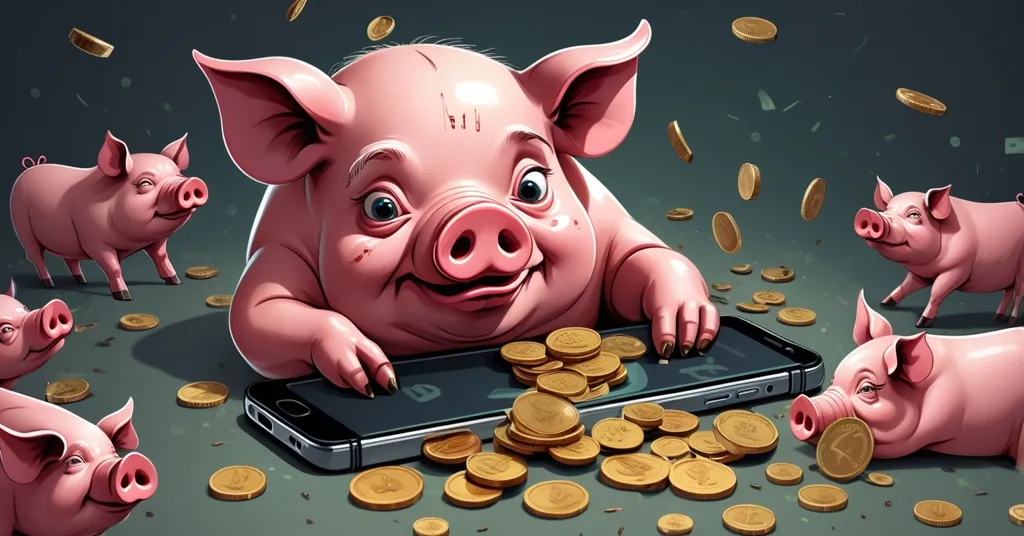Tether’s USDT Linked to $24B Pig Butchering Scams: Regulatory and Compliance Challenges

Tether’s USDT and the Pig Butchering Scams: Navigating Regulatory Scrutiny and Compliance
In the murky underbelly of the cryptocurrency world, the Cambodia-based darknet marketplace, Huione Guarantee, has emerged as a central hub for pig butchering scams. These scams, where victims are lured into fake cryptocurrency investments through romantic or social manipulation, have seen a staggering $24 billion flow through Huione’s wallets over the past year. Tether’s USDT (Tether USD) has become the preferred tool for laundering the proceeds, highlighting both the potential and pitfalls of stablecoins in the crypto ecosystem.
- Huione Guarantee: Central to pig butchering scams in Cambodia
- USDT: Key in laundering scam proceeds
- USDH: Huione’s attempt to bypass Tether’s compliance
- CertiK: Controversial audit of USDH
- Tether’s Audit: Engaging with Big Four for transparency
Huione Guarantee, now rebranded as Haowang Guarantee, provides scammers with a comprehensive toolkit for their nefarious activities. From social engineering strategies to a network of ‘mules’ who help launder the money, Huione’s services are tailored to maximize the scammers’ gains. The process typically involves converting the scam proceeds into USDT through Bahamian banks before moving the funds to Cambodia for cashing out. The matchmakers orchestrating these scams claim around 15% of the laundered total as their cut, a testament to the lucrative nature of these operations.
Tether’s USDT has been implicated in over $11 billion flowing through Huione in the past three years. In an attempt to curb these activities, Tether froze nearly $30 million worth of USDT linked to Huione, a move possibly influenced by the wallet’s association with North Korea’s Lazarus Group. Yet, the scammers have proven resilient, launching their own stablecoin, USDH, to circumvent Tether’s tightening compliance measures. Huione promoted USDH as a solution to avoid “the common freezing and transfer restrictions of traditional digital currencies,” showcasing the cat-and-mouse game between scammers and compliance efforts.
The launch of USDH brought the blockchain security firm CertiK into the fray. CertiK, tasked with auditing USDH’s smart contract (a self-executing contract with terms written into code), faced backlash for not recognizing Huione’s fraudulent activities. Despite the audit report mentioning Huione, CertiK issued a public apology, admitting they were contacted by a third-party developer agency and failed to link the project to Huione’s fraud until after the audit. The report was later deleted, adding fuel to the controversy.
Amidst these challenges, Tether is striving to bolster its regulatory standing. The company has engaged with a Big Four accounting firm for a potential audit and hired a new CFO to prioritize a full financial audit. These steps are part of a broader industry push towards transparency and compliance, driven by increasing regulatory scrutiny and public skepticism. Tether’s CEO, Paolo Ardoino, has been vocal about these initiatives, though skepticism persists. As one observer noted:
“With respect, ‘engaging with’ is typical Tether. Sounds great, means nothing.”
The narrative becomes even more complex with Tether and Tron’s involvement in the T3 Financial Crime Unit, a collaborative effort with TRM Labs to combat cryptocurrency-related crime. Justin Sun, Tron’s founder, is also part of this unit. While the initiative aims to tackle the very crimes associated with Tether and Tron, questions linger about its effectiveness and sincerity.
The ongoing saga of Tether and Huione underscores the dual nature of the cryptocurrency world: a realm of innovation and freedom, yet also a breeding ground for scams and illicit activities. As the industry champions decentralization and disruption, it must also confront the dark side of its potential. The struggle for transparency and regulatory compliance is crucial, not just for Tether, but for the entire crypto ecosystem.
Bitcoin maximalists might argue that such controversies reinforce the importance of sticking to Bitcoin, the original and most secure cryptocurrency. However, altcoins and other blockchains like Ethereum play vital roles in this financial revolution, filling niches that Bitcoin alone cannot serve. The challenge lies in balancing these innovations with the need for security and integrity.
Key Takeaways and Questions
- What is pig butchering?
Pig butchering is a type of scam where victims are lured into investing in fake cryptocurrency schemes, often through romantic or social manipulation.
- How does Huione Guarantee facilitate these scams?
Huione Guarantee provides scammers with tools, services, and a network of ‘mules’ to launder money obtained from victims, often converting it into USDT.
- What role does Tether play in these scams?
Tether’s USDT is used as a primary vehicle for laundering scam proceeds, with significant volumes flowing through Huione.
- Why did Huione launch its own stablecoin, USDH?
Huione launched USDH to bypass Tether’s compliance measures, which had started to freeze funds linked to fraudulent activities.
- What controversy surrounded CertiK’s audit of USDH?
CertiK faced criticism for auditing USDH without recognizing Huione’s fraudulent activities, despite the audit report mentioning Huione’s name.
- What steps is Tether taking to improve its regulatory standing?
Tether is engaging with a Big Four accounting firm for a potential audit and has hired a new CFO to prioritize a full financial audit.
- What is the T3 Financial Crime Unit?
The T3 Financial Crime Unit is a collaborative initiative between Tether, Tron, and TRM Labs aimed at combating cryptocurrency-related crime.
In this complex landscape, the cryptocurrency community must remain vigilant, championing the principles of decentralization and privacy while confronting the challenges head-on. The path to a decentralized financial future is fraught with obstacles, but with continued efforts towards transparency and integrity, the potential for positive change remains strong.



